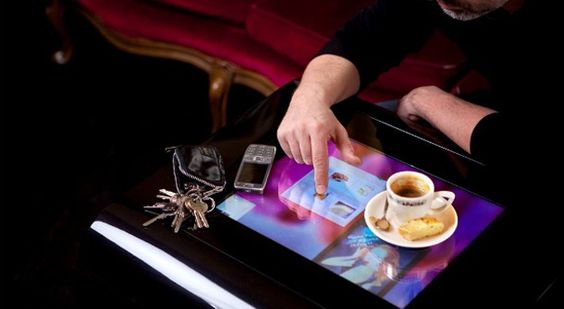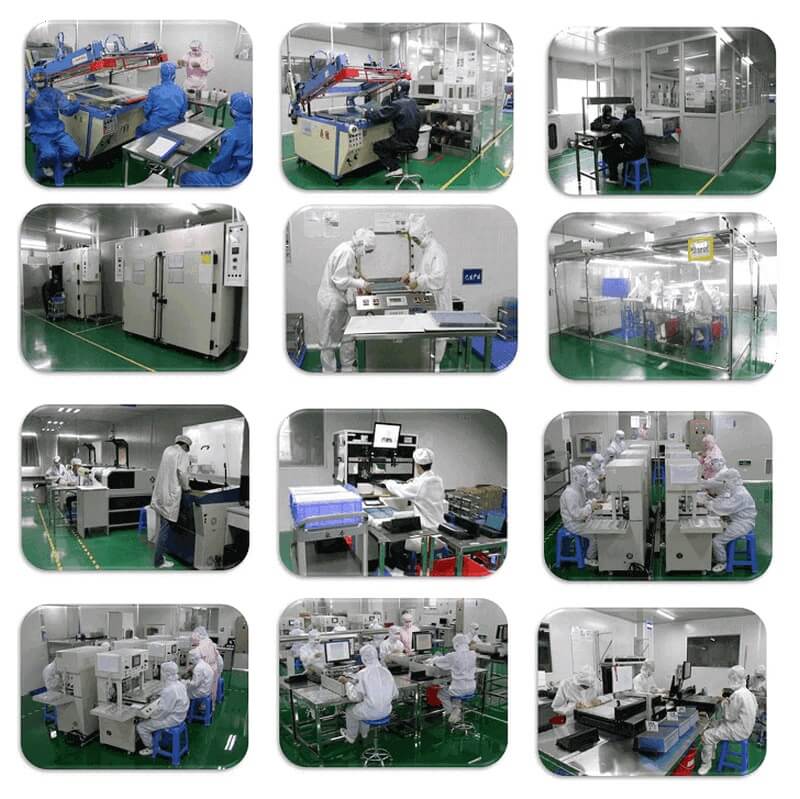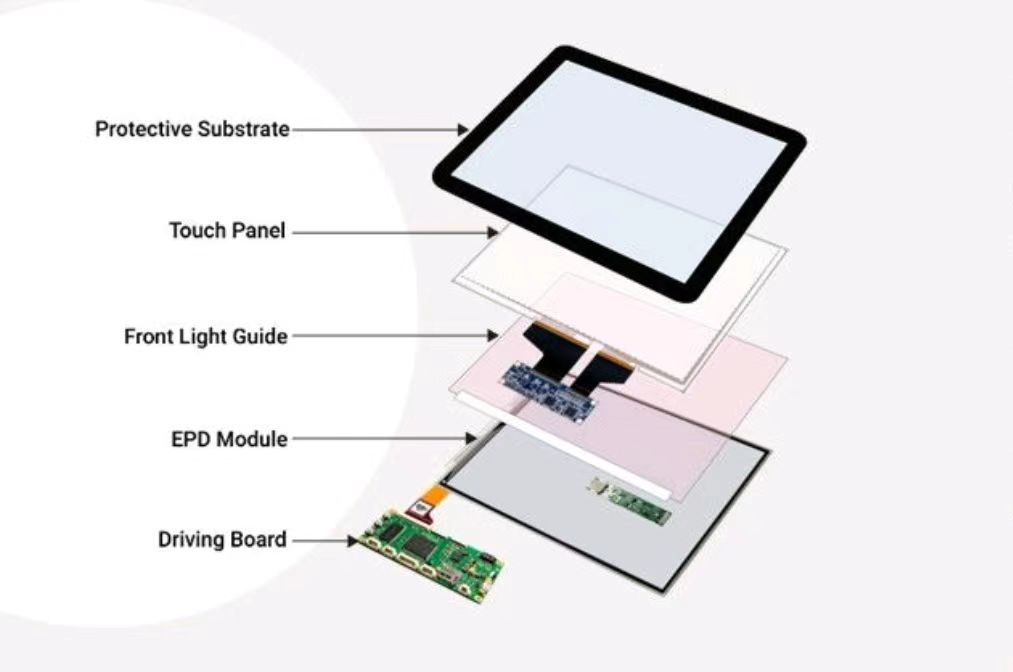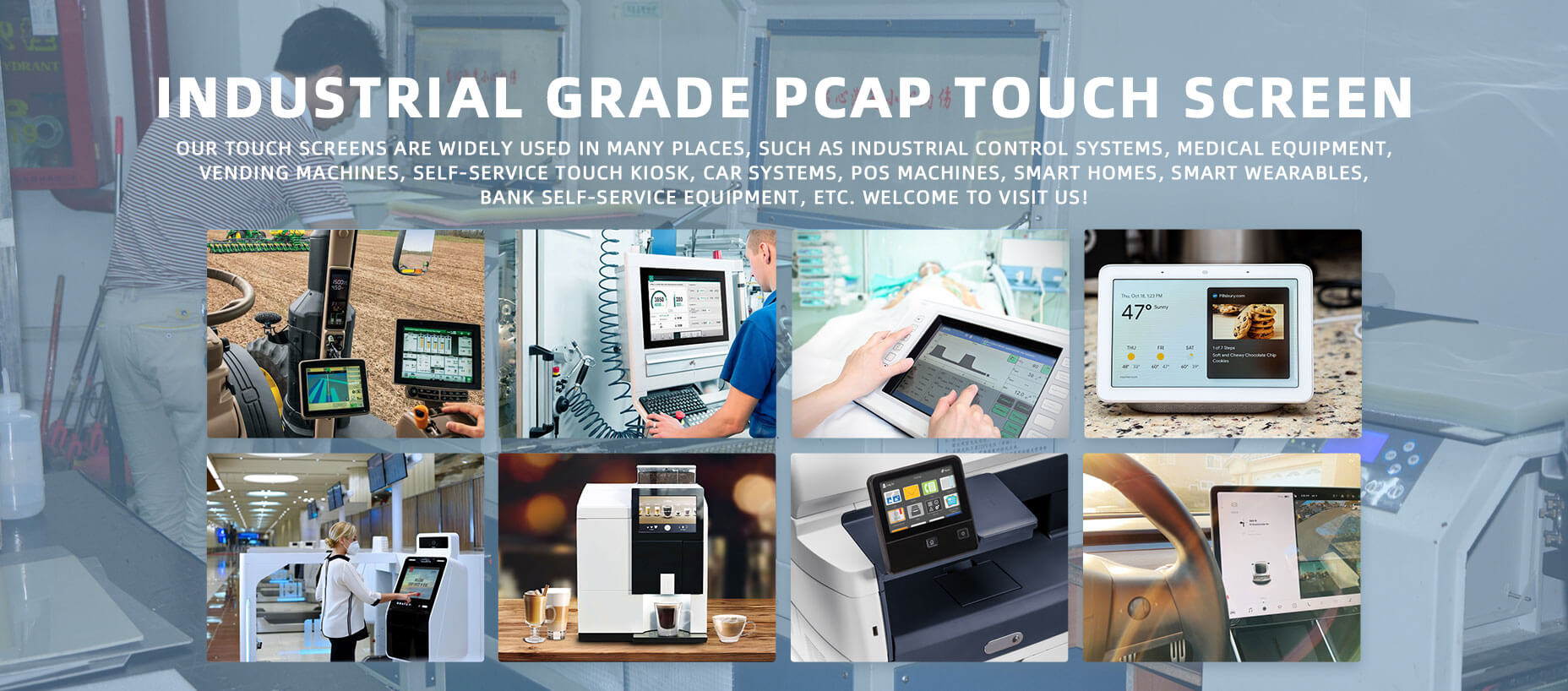News
What is a self-service ordering machine?


What is a self-service ordering machine?
As you might have guessed from the name, self-order kiosks allow guests to order and pay for their own food — a bit like a sophisticated vending machine, but for catering.
These systems typically consist of a touchscreen (usually a tablet) with an easy-to-use digital interface, typically a customizable touchscreen, that displays the restaurant's menu and guides customers through the ordering process - from meal preparation to payment. and pickup. When a customer establishes an order, the kiosk can also display prompts with different promotions or menu modifiers that the customer may not be aware of.
Why self-ordering kiosks are on the rise
As mentioned before, self-ordering kiosks are nothing new. Before the pandemic, many large restaurant chains had already added self-ordering kiosks to their restaurants and quickly found success with the technology. McDonald's reports that restaurants that have introduced kiosks have experienced an average sales increase of 5% to 6%. When Chili’s added self-ordering kiosks to its tables, the chain’s dessert sales jumped 20 percent.
The jump in sales is largely due to changes in customer behavior. Customers have become accustomed to the convenience and speed of online ordering and increasingly expect the same level of control, choice and personalization when they visit a restaurant in person. Restaurant kiosks are designed to deliver a faster, more personalized ordering experience, making them perfect for customers' ever-changing expectations.
A self-service ordering machine is an automated device usually used in catering establishments such as restaurants or fast food restaurants. Customers can use self-service ordering machines to select food items on the menu, add additional items, adjust food specifications, and complete payment without the direct intervention of a human waiter.
These self-ordering kiosks typically feature touch-screen displays and user-friendly interfaces to make it easy for customers to browse the menu, select food, customize their order, and pay. Some self-service ordering machines can also accept different forms of payment such as cash, credit card or mobile payment.
The emergence of self-service ordering machines has brought a lot of convenience to both customers and businesses. For customers, they can freely browse the menu, better control the ordering process, and avoid waiting in line for manual service. For merchants, self-service ordering machines can improve order processing efficiency, reduce labor costs, and provide customers with a faster and more convenient dining experience. A self-service ordering machine is an automated device designed to simplify the process of ordering and checking out at a restaurant or fast food restaurant. These machines typically feature a touch-screen display interface that allows customers to self-select their desired food and beverage items through on-screen menus and options. Generally speaking, the self-service ordering machine displays all available dishes and packages in the store, as well as the corresponding prices and descriptions.
The operation process of self-service ordering machines usually includes the following steps:
Choose language: Customers can choose the language used based on their preference.
Select Menu: Browse the menu and select the desired dish or combo via the touch screen interface. Menus are usually divided into different categories such as mains, drinks, desserts, etc.
Customization options: Some self-ordering kiosks also allow customers to customize their dishes to personal tastes or special requests, such as adding or removing specific toppings.
Checkout and Payment: After completing their order, customers can choose to checkout and choose their payment method. Payment options typically include cash, credit card, Alipay, WeChat Pay, etc.
The advantages of self-service ordering machines include improving ordering efficiency and accuracy, reducing manual errors and queuing time. In addition, they increase customers' ability to choose and customize menus, enhancing the overall dining experience. Therefore, self-service ordering machines are becoming more and more popular in the catering industry and are widely used in various restaurants and fast food chains. A self-service ordering machine is a self-service catering service equipment that is usually placed at the entrance or counter of a restaurant or fast food restaurant. This type of machine allows customers to select menu items, drinks and other food items through a touch screen or button, as well as pay and submit their orders. The operation interface of self-service ordering machines usually provides clear menu options, pictures and prices, making it easy for customers to quickly browse and select the food they need. Some self-service ordering kiosks also offer customization options, allowing customers to customize their orders based on personal tastes and preferences. After completing the order, customers can choose cash, credit card, mobile payment or other payment methods to complete the order payment. The emergence of self-service ordering machines can not only reduce the communication time between customers and waiters, improve ordering efficiency, but also reduce labor costs and provide restaurants with a more efficient business model. A kiosk is an automated device designed to allow customers to select and order their desired food or beverage items at a restaurant or fast food restaurant. These machines typically feature touch-screen interfaces and simple user interfaces that allow customers to browse menus, select items, customize orders, and pay. The emergence of self-service ordering machines aims to improve customers' dining experience, reduce waiting time during ordering, and also reduce labor costs in restaurants. This kind of equipment is usually used in fast food chains, cafeterias, restaurants and other places, and has become an important tool for many catering operators to improve efficiency and service quality.
5 benefits of self-service ordering kiosks in restaurants
Clearly, self-service ordering kiosks are growing in popularity, and not without good reason. Below, we’ll dive into five of the biggest benefits of self-service ordering kiosks for restaurants like yours.
1. Increase check size
Perhaps the biggest benefit of self-service ordering kiosks is the impact on average check size.
Your self-ordering kiosks can do this for you, instead of relying on your employees to highlight your high-margin items and expensive add-ons. With self-service ordering kiosks, guests can choose to receive targeted and intuitive upsell prompts when placing an order. This can include special promotions, such as buy two, get one free, but can also include strategic upsell tactics, such as adding extra paid toppings, upgrading to premium sides, or making meals into combos.
You’ll be pleasantly surprised when you check your POS reports to see how effective these little add-ons are. Taco Bell, for example, makes 20% more money from digital orders than from human cashiers.In the case of McDonald's, the chain found that customers spent about $1 more per order when using kiosks, resulting in a 30% increase in the average check size. McDonald's also found that 20% of customers who didn't initially order a drink did so when purchasing a drink through a kiosk. All of this adds up to more money in your pocket.
2. Reduce waiting time
Another clear benefit of self-ordering kiosks is that they speed up the ordering process.
Let's face it, hungry customers hate waiting in long lines. In fact, a Tillster study found that 75% of customers would choose to order from a kiosk if the line to order at the cashier was longer than five people. What if the line is 10 people long? A whopping 91% of people said they would prefer to order from a restaurant kiosk.Self-ordering kiosks can help customers reduce wait times by allowing them to create an order, send it to the kitchen and pay with just a few taps. Customers can then exit the queue and wait for their order to be ready before picking it up from a designated counter.
While it may not seem like a significantly faster process, Appetize data shows that implementing kiosks reduced overall order time by nearly 40%. Some restaurants, like Moe’s Southwest Grill in Pittsburgh, have even launched kiosk-only stores to increase operational efficiency due to faster ordering and shorter lines. Of course, the time saved in queuing means customers and employees spend less time at risk of potential spread of the coronavirus.
3. Improve order accuracy
When your customers select and submit their own orders, the order's margin of error is significantly reduced. Kiosks with visual menus are valuable for reducing miscommunication by ensuring your customers know exactly what they are ordering, preventing “that’s not what I ordered” conversations.
With improved order accuracy, your kitchen won't waste time preparing unordered items or incorrect dishes. In turn, you won’t have to deal with angry customer complaints or negative online reviews. With self-ordering technology, you can finally make the cost of meals due to vacancies and discounts a thing of the past.Improving order accuracy is especially important for restaurants today, as there are now fewer interaction points with customers. Since restaurants can no longer wow customers with the same level of on-site dining service they once did, serving the right food has become the most important factor in providing a great customer experience.
4. Save labor costs
Self-ordering kiosks can also help solve productivity issues by giving restaurant owners the flexibility to move staff around. Front-office employees who used to manually take orders can now be reassigned to other tasks to increase sales and improve the customer experience.
This kind of flexible employment can not only increase productivity, but also help reduce overall labor costs. While self-ordering kiosks cannot (and should not) replace all restaurant staff, it may mean you need fewer employees during busy shifts. For restaurants on a tight budget, saving money on one or two workers may help keep operating costs low enough to stay afloat.Customers order food from an iPad kiosk at the table
5. Make employees and customers feel comfortable
Perhaps the biggest benefit of self-order kiosks in the wake of the pandemic is that they can help keep customers and employees comfortable by reducing face-to-face interactions. Even if the risk of infection is reduced, some people may still feel more comfortable ordering from a kiosk rather than in person.
Self-serve technology offers anxious guests a comfortable way to grab a meal by giving them the power to order and pay for their food all by themselves. Whether the kiosk is placed at the front of your restaurant or directly on each table, a kiosk allows a customer to place their order and send those orders directly to the kitchen without an in-person interaction with staff.
DINGTOUCH: Committed to continuous innovation and improvement of product quality to meet customers' high requirements and expectations.
DINGTOUCH is a manufacturer that provides high quality touch screen panels. Focus on the design, manufacturing and sales of touch screen panels, and are committed to providing customized solutions that satisfy customers.
DINGTOUCH: In the process of customizing touch screen panels, we focus on close cooperation and communication with customers. Understanding customers' needs and providing customized solutions will meet customers' individual needs. The company's products are favored by customers for their high quality and reliability, and provide them with the best touchscreen panel solutions.
At DINGTOUCH, we are the world's leading touchscreen manufacturer, helping businesses around the world take advantage of this exciting technology. For more information, please visit the home page now.
How to choose touch screen customization?
Find the DINGTOUCH technical team to achieve the success of your company's new project.
DINGTOUCH is a company specializing in the R&D and production of touch screen technology, headquartered in Shenzhen, China. As a professional touch screen supplier, DINGTOUCH is committed to providing high-quality, stable and reliable touch screen products to meet the diverse needs of customers. We continue to carry out technological innovation and product optimization to ensure that its touch screen products have good sensitivity, accuracy and durability.
In addition to the products themselves, we also focus on cooperation and communication with customers, and are committed to providing customized solutions and excellent after-sales services. Through continuous efforts to improve product quality and customer satisfaction, we have established a good reputation in the touchscreen industry and won widespread market recognition.

What DINGTOUCH can do:
• PCAP maximum size 65”
• Multi-touch (Touch screen can be customized to your needs.)
• Optical bonding service/air bonding
• LCD interface: HDMI/RGB/MIPI/LVDS/EDP, etc.
• PCAP interface: IIC/USB interface
• CTP can customize the cover glass surface treatment process AG (anti-glare), AR (anti-reflection), AF (anti-fingerprint), waterproof, and glove touch
• Supports 0.55 mm-12 mm coverslip touch.
• Support operating temperature: -40℃-90℃.
Dingtouch Industrial Capacitive Touch Screen Manufacturer
In conclusion, Dingtouch as a professional touch screen manufacturer with more than 10 years touch screen experience.We have many capacitive touch screen. Such as5 inch touch screen,7 inch touch screen,10.1inch touch screen,15 inch touch screen,15.6 inch touch screen,17 inch touch screen,18.5 inch touch screen,19 inch touch screen,21.5 inch touch screen,32 inch touch screen, However, we also welcome to customize your own touch screen . Contact our team today to learn what capacitive touch screen are best for our retail business needs.
Contact us NOW! sales@szdingtouch.com


CATEGORIES
CONTACT US
Contact: Dingtouch
Phone: +8615815536116
Tel: +8615815536116
Email: sales@szdingtouch.com
Add: Building A, Bailu Plaza, No. 48, Gonghe Industrial Road, Gongle Community, Xixiang Street, Baoan District, Shenzhen,China. 518126



 Dingtouch
Dingtouch